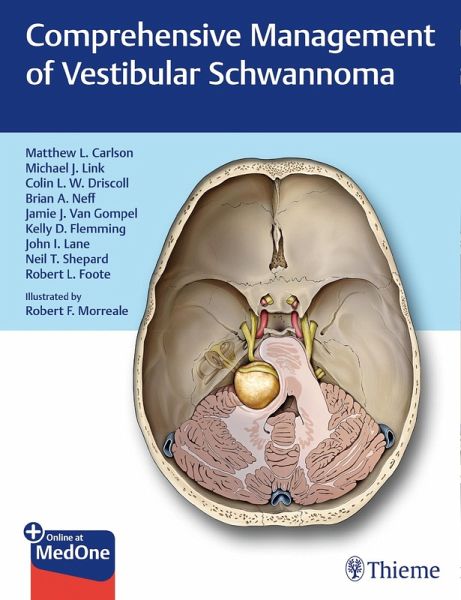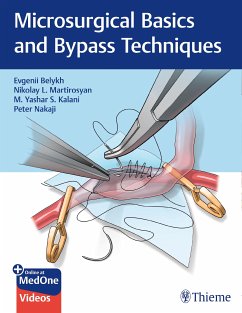
Comprehensive Management of Vestibular Schwannoma (eBook, ePUB)
Versandkostenfrei!
Sofort per Download lieferbar
142,95 €
inkl. MwSt.
Weitere Ausgaben:

PAYBACK Punkte
71 °P sammeln!
This new publication is superb… the best book, even by the standards of this publisher, in a very long time. - The Journal of Laryngology & OtologyThe definitive resource on clinical management of vestibular schwannoma from world renowned expertsAlthough a histologically benign and relatively uncommon tumor, otolaryngologists and neurosurgeons have maintained a lasting and deep-rooted fascination with vestibular schwannoma, also known as acoustic neuroma. Advancements in microsurgical technique, radiosurgery, and radiotherapy, coupled with an increased understanding of the natural histo...
This new publication is superb… the best book, even by the standards of this publisher, in a very long time. - The Journal of Laryngology & Otology
The definitive resource on clinical management of vestibular schwannoma from world renowned experts
Although a histologically benign and relatively uncommon tumor, otolaryngologists and neurosurgeons have maintained a lasting and deep-rooted fascination with vestibular schwannoma, also known as acoustic neuroma. Advancements in microsurgical technique, radiosurgery, and radiotherapy, coupled with an increased understanding of the natural history of the disease, have made modern management of this tumor considerably more complex. Concurrently, new controversies have added to the original debates among pioneering surgeons, with the pendulum swinging between conservatism and definitive cure.
Comprehensive Management of Vestibular Schwannoma, by distinguished Mayo Clinic clinicians and renowned international contributors, is a comprehensive textbook covering all the clinical aspects of vestibular schwannoma management. Eighty-four chapters written by multidisciplinary experts including otolaryngologists, neurosurgeons, radiation oncologists, neurologists, neuroradiologists, and audiologists, ensure a balanced view of all treatment modalities for sporadic and neurofibromatosis type 2-associated vestibular schwannoma.
Key Features
The definitive resource on clinical management of vestibular schwannoma from world renowned experts
Although a histologically benign and relatively uncommon tumor, otolaryngologists and neurosurgeons have maintained a lasting and deep-rooted fascination with vestibular schwannoma, also known as acoustic neuroma. Advancements in microsurgical technique, radiosurgery, and radiotherapy, coupled with an increased understanding of the natural history of the disease, have made modern management of this tumor considerably more complex. Concurrently, new controversies have added to the original debates among pioneering surgeons, with the pendulum swinging between conservatism and definitive cure.
Comprehensive Management of Vestibular Schwannoma, by distinguished Mayo Clinic clinicians and renowned international contributors, is a comprehensive textbook covering all the clinical aspects of vestibular schwannoma management. Eighty-four chapters written by multidisciplinary experts including otolaryngologists, neurosurgeons, radiation oncologists, neurologists, neuroradiologists, and audiologists, ensure a balanced view of all treatment modalities for sporadic and neurofibromatosis type 2-associated vestibular schwannoma.
Key Features
- Evaluation, surgical and nonsurgical approaches, rehabilitation, controversies, and long-term clinical outcomes
- Detailed illustrations by Robert Morreale, senior medical illustrator at the Mayo Clinic, highlight relevant anatomy and surgical approaches
- Chapter summary tables provide readers with a rapid clinical reference derived from the published world literature
- The chapter "Anatomy of Vestibular Schwannoma Surgery" by the late internationally renowned
Dieser Download kann aus rechtlichen Gründen nur mit Rechnungsadresse in A, B, BG, CY, CZ, D, DK, EW, E, FIN, F, GR, HR, H, IRL, I, LT, L, LR, M, NL, PL, P, R, S, SLO, SK ausgeliefert werden.













